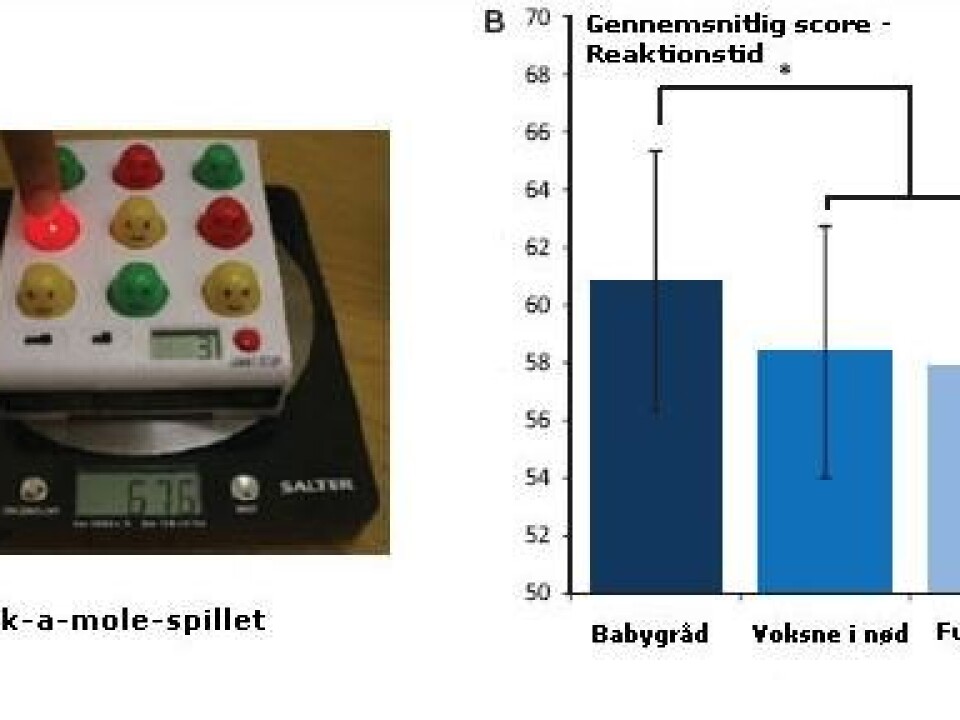
Baby cries shorten our reaction time
The sound of a baby crying motivates our brain’s alertness and sharpens our ability to react with highly accurate movements. The sound of a woman crying does not have the same effect.
Now science can confirm what every parent knows: few sounds can get us up on our toes like the sound of a baby crying.
”Baby cries elicit a unique and lightning fast reaction in us humans – a reaction that seems to be stored in our brains from ancient times,” says Professor Morten Kringelbach of MindLab – the Centre of Functionally Integrative Neuroscience (CFIN) at Aarhus University – who was one of the researchers behind the study.
“The sound alone is enough to sharpen our motor functions and reaction time – and we don’t even need to see the baby’s face,” says Kringelbach.
Reaction time measured with Whack-a-mole
The researchers used the Whack-a-mole game to test the reaction time, precision and dexterity of 40 participants, 20 men and 20 women aged between 19 and 59. Three of the participants were parents, but none of them had little babies.

All subjects were presented with three five-minute sound sequences: crying babies, crying women and high-pitched bird song. The three sequences had highly similar sound characteristics.
After having been randomly presented with each sound category, participants were asked to play a specially-constructed version of Whack-a-mole (see picture below), consisting of nine buttons which lit up randomly. The task was to push the lit-up buttons as quickly as possible, with the degree of difficulty increasing as the game proceeded.
The researchers had placed the game on an electronic weight to measure how hard the subjects pressed the buttons,
Baby cries improve motor functions
They then measured reaction times for each sound category and how hard the subjects had pushed the buttons after each sound.
It turned out that the participants – men and women alike – had a significantly quicker reaction time and pressed considerably harder on the buttons after having listened to crying babies.
This finding contrasts with previous studies which have shown that the sound of crying babies impairs our mental capacity and concentration more than other noisy sounds.
”Our study shows that there is also a positive response linked to hearing the sound of crying babies: it improves our ability to react quickly and with very precise movements,” says Kringelbach.
Inner alertness improves parental care
The new findings make good evolutionary sense because the increased reaction times can improve our parenting skills:
“Virtually all baby animals have specific sounds signalling that they’re feeling unwell, and in that sense baby cries are specific to us humans,” says the researcher. “It’s a sound we just cannot ignore. And even though crying is physically demanding for a baby, the efforts are compensated for by what the baby gets out of crying – its parents’ care and attention.”
Findings could alleviate postnatal depressions
The new findings could also prove helpful in understanding and treating women suffering from postnatal depression.
Previous studies have shown that some women who suffer from postnatal depression do not react to baby cries in the same way as other people.
”The next step is to study whether it’s possible to intervene and help the mother to pick up the baby’s signals and respond to them,” says Kringelbach.
--------------------------------------------------
Read this article in Danish at videnskab.dk
Translated by: Dann Vinther






